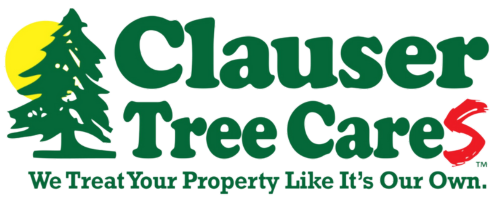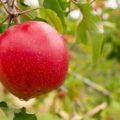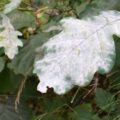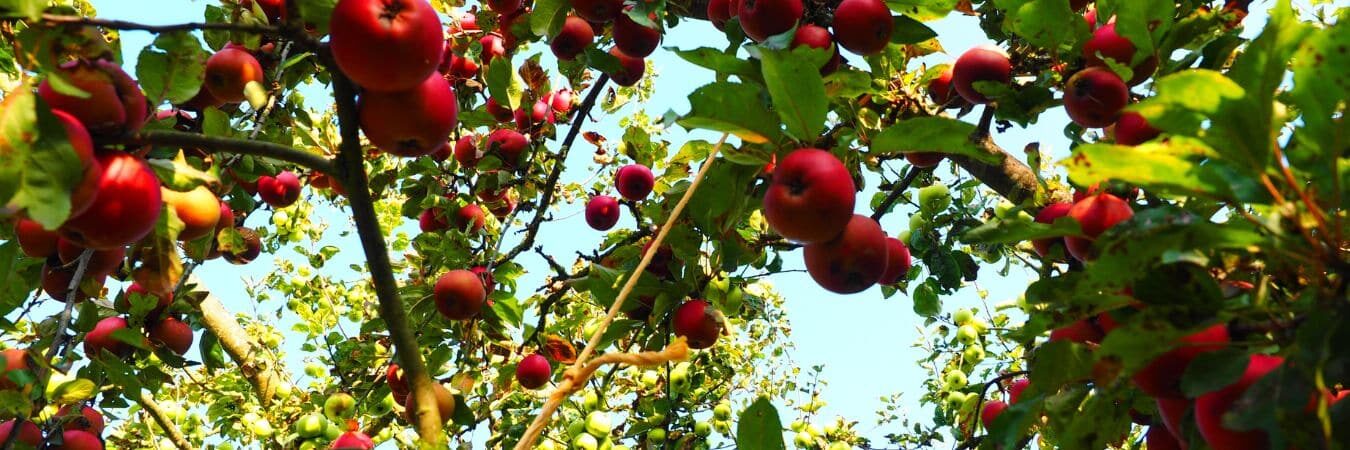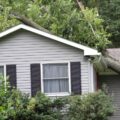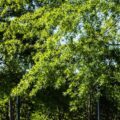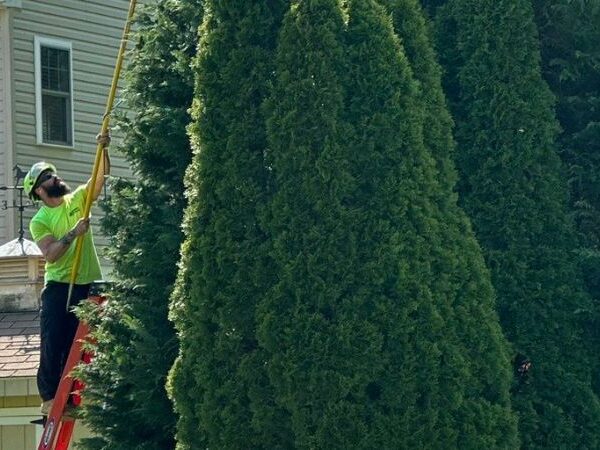While we love healthy trees in Pennsylvania, a sick, damaged, or dead tree isn’t only an eyesore, it can be a hazard. A dangerous tree puts anything nearby at risk of injury or damage and should be dealt with by a certified arborist ASAP. But how do you know if your tree is dangerous?
It’s not always easy to determine the level of a tree’s decline or the degree of risk it poses, especially if the problem isn’t immediately visible. However, you can learn to identify signs of a dangerous tree to prevent a declining tree from becoming a hazard and maybe even help a sick tree get healthy.
The most important thing to consider when evaluating a tree in decline is determining whether it’s potentially dangerous. And while there are things you can look at to help you determine whether a tree presents a hazard, sometimes bringing in a certified arborist for an expert evaluation is necessary.
Is This Tree a Hazard? 7 Signs of a Dangerous Tree
If your tree seems to be in decline, or if you’re concerned about potential liability if the tree or large branches should fall, here are a few things you can visually examine to determine if it may be a hazard and if you should call in a tree professional.
1. Root Damage or Decays
A tree’s root system is its lifeline. Without a healthy root system, a tree can become unbalanced and dangerous.
An example of a compromised root system is when roots have been paved over, damaging them and making the tree potentially hazardous.
A damaged root system makes trees more likely to fall over in severe weather or even from the weight of their limbs and leaves. Root damage can occur in different ways, including:
- severing roots when paving or for construction trenching
- heavy foot or vehicle traffic over roots
- roots that have decayed due to age or illness
Sometimes root damage is seen as branch dieback in the tree’s canopy or by discolored leaves. These signs indicate the roots aren’t getting the nutrients they require.
Call a professional tree service company with certified arborists on staff ASAP if you notice any of your trees:
- suddenly leaning to one side
- dropping branches
- has had roots cut off for paving or trenching
- has exposed roots, roots with visible decay (such as oozing wounds or soft spots), or other signs of root rot (including soft spots in the ground near the tree or the appearance of mushrooms around the tree base)
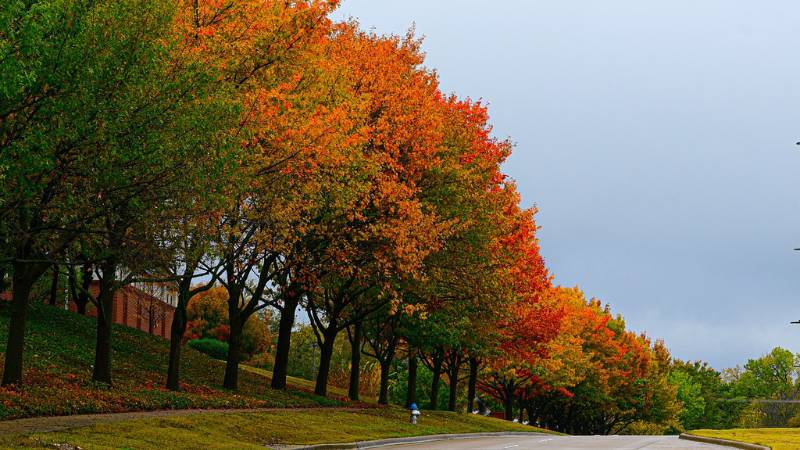
2. Lopsided Tree Canopy
A misshapen crown can result from poor pruning or topping, storm damage, and unfavorable growing conditions. An uneven or misshapen crown can be an even greater hazard if the tree’s internal structure is damaged. Poor pruning practices can also result in the rapid growth of water sprouts that are not firmly attached.
A lopsided tree canopy indicates that the weight of branches and leaves throughout the tree is unevenly distributed. This means there’s more pressure on one side of the tree than the other, and the tree may not be able to support itself. Large, overgrown branches will also contribute to this imbalance. Imagine if you had to stand on one leg all day with the opposite arm held out to the side – you’d probably topple over too!
Get your trees evaluated right away if they:
- Start leaning to one side
- Have large side branches that have outgrown the central branch’s size
- Have been topped, have had many heading cuts made to large branches, or are producing a lot of water sprouts
3. Cracked Bark
A tree’s biggest protector from pests and disease is the bark. In addition to keeping these things from getting in, bark cushions the tree against injury and helps moderate the tree’s internal temperature. This is why cracks or splits in the bark can potentially cause problems and could be an indication of more significant issues already affecting the inside of your tree.
It’s essential that you look for signs of cracked, splitting, or peeling bark on your trees. Contact a professional tree service if you notice any of the following:
- Deep splits or cracks in the bark
- Cracks or splits that expose the underlying wood
- Multiple bark cracks in the same area of the tree
- Cracks or splits extending beyond an existing wound
- Bark cracks or splits on large branches that could cause damage if they fall – dead branches are not only unattractive; they’re potentially dangerous!

4. Deadwood
Pruned trees have open, balanced crowns that are more resistant to storm damage. But deadwood within a tree’s crown is brittle and more likely to break during storms or heavy snowfall. Deadwood can also be a sign of internal trunk decay.
Because deadwood is brittle, it can drop at any time. You need to be especially aware of large branches that may have broken off and are stuck in the tree’s crown. These branches are hazardous since they’re not attached to anything and could fall without warning.
Contact Clause Tree Care if you notice the following:
- A dead, unattached branch stuck in your tree’s canopy
- A tree with a dead central branch
- Areas of deadwood within an otherwise healthy-looking tree
- The tree isn’t producing leaves when it should – typically spring or summer
- A large, dead branch still attached but broken
Remember, your tree could pose a hazard unless nothing is under the tree or within its fall radius.
5. Cankers and Oozing Wounds
Cankers result from diseases or wounds that didn’t heal properly to seal off the decayed area. Missing, sunken, or damaged bark are signs of a canker.
A canker on the outside of your tree can indicate internal decay or damage. That can signal that your tree is dangerous.
Get a professional tree risk assessment if:
- A canker extends around half or more of a large branch or the trunk
- There is a canker on the trunk near where it connects to a large branch
- You see cankers around existing bark cracks, wounds, or trunk cavities
6. Co-Dominant Leaders or Poor Branch Unions
Trees with co-dominant leaders, meaning the main trunk divides into two or more competing trunks, are inherently weaker than single trunks. Branches with narrow attachment angles are also structurally weaker and more likely to split.
Sometimes branches can grow too closely together, and while their bark fuses at the base, it doesn’t completely seal the tree off from potential damage. This makes the already weak branches more susceptible to breakage. Debris and moisture collected at these unions can attract insects and foster diseases.
While some trees, such as those with naturally upright growth patterns, are more susceptible to fused or included bark, many species that have not been properly pruned can also develop these. The Bradford pear tree is notorious for splitting apart in storms due to its weakly attached branches and narrow branch crotches.
Call a certified arborist for an assessment if you notice any of these signs of danger on your trees:
- Your tree has two or more trunks that are growing close together (usually, they will appear to be joined at the base)
- There are large branches attached to the trunk at a very narrow angle (growing upward instead of outward)
- A narrow branch crotch near a crack, cavity, or existing wound
- Bark splitting around where a branch attaches to the trunk or a larger branch
Note: There may not be visible signs of decay; compromised wood can fall at any time.

7. Decay
If you see mushrooms or conks (shelf-like fungi) emerging from the tree trunk, have the tree assessed.
Advanced, visible decay is one of the most obvious symptoms of a hazardous tree. Seeing mushrooms or conks growing on your tree can indicate internal structural decay. The same is true for areas of crumbling bark.
Be aware that trees can regrow healthy bark over areas of decay, which will keep the decay hidden. But, while the new growth masks the decay, it doesn’t negate the structural damage that could lead to the tree falling.
This type of hidden decay can be much more serious for large trees since the size of the tree means greater potential damage and danger.
Contact a tree service with an arborist who has a Tree Risk Assessment Qualification (TRAQ) on staff if you see the following:
- Soft spots, oozing, fungal growths, holes, crumbling bark, or other signs of decay on the tree trunk or large branches
- Thin, new growth over deeper layers of decayed tissue (this often isn’t visible without specialized equipment to “see” inside the tree)
Leaving damage to sort itself out isn’t an appropriate solution. Decay won’t stop on its own, and the damage creates a safety risk. Don’t wait to get an evaluation of your tree’s structural soundness.
How to Deal With Hazardous Trees
There are steps you can take to reduce the chance your tree will become a hazard that puts you and your property at risk:
Prune Your Trees Properly
Corrective pruning removes damaged or decayed branches and can reduce a tree’s size to keep it out of range of nearby targets. Regular tree inspections and pruning can identify problems and stop dangerous tree situations from developing. Keeping your trees in good shape reduces their chance of becoming a hazard.
Move Targets Out of Range.
Move items near a tree, such as play equipment or parked cars, out of a tree’s range. This is one of the easiest solutions for preventing damage. Moving potential targets is a good strategy for small spaces in combination with corrective pruning or crown reduction.
Cabling or Bracing to Provide Structural Support
When pruning alone cannot remediate the hazards, installing cables or braces to support weak, split, or overly long branches can sometimes make the tree safer. These need to be inspected regularly (we recommend annually) to ensure nothing has shifted or come loose and may need to be replaced as the tree continues to grow.
Create a Wildlife Habitat From a Hazard Tree.
Keeping a “snag” tree or wildlife tree is encouraged if you can safely do so. First, have it assessed to ensure there are no hidden dangers. Then, have your arborist prune it to a size that reduces the hazard range and leave it standing to provide sheltering habitat for birds and wildlife.
Remove the Tree
Sometimes there’s no other option but to remove a tree. When this happens, consider having firewood made from your tree. You can also see if giving the wood a new life as milled lumber is an option. Your local woodworkers will thank you!
A Final Word on Dangerous Trees
All trees have a lifespan, and urban or suburban trees are no exception. Additionally, urban trees are often subjected to poor pruning and environmental conditions that can shorten their lifespans compared to their forest counterparts.
The hazard symptoms discussed here can be signs of serious defects within your trees. When you see signs of disease, decay, or any other condition that suggests damage may occur, you must act responsibly and schedule a professional evaluation of our tree.
Remember, while we love trees and their benefits, no tree’s so valuable that it should put you, your family and neighbors, or your property at risk.
Do you have a potentially dangerous tree that needs to be evaluated in Montgomery or Bucks County, PA? Call Clauser Tree Care today at 215-337-4022 to speak with our friendly staff and schedule a tree inspection.
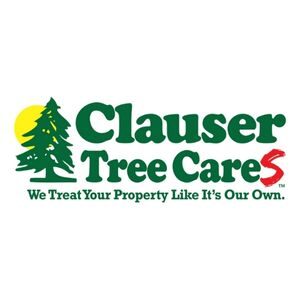
About Clauser Tree Care
From who you talk to on the phone in our office, to our courteous and experienced work crews who provide your service, all of the hard-working team members at Clauser Tree Care strive for complete client satisfaction. Our job is simply not done until you are pleased with the experience that you have had working with our company. Founded more than 25 years ago on the principles of honest work and arboricultural best practices, we strive for a higher standard of care for a greener future.
